#Simiiformes
Explore tagged Tumblr posts
Text

A dusky leaf monkey (Trachypithecus obscurus) and its infant in Malaysia. Infants of this species are born orange/blonde, which fades as they age
by K.L. Chew
#dusky leaf monkey#juvenile#langurs#monkeys#trachypithecus obscurus#trachypithecus#cercopithecidae#simiiformes#haplorhini#primates#mammalia#chordata#wildlife: malaysia#wildlife: asia
552 notes
·
View notes
Text


This animal was requested!
#south american wildlife#golden-handed tamarin#brazil#guyana#french guiana#suriname#venezuela#tamarin#mammalia#mammal#mammals#primates#haplorhini#simiiformes#callitrichidae#animal polls#poll blog#my polls#animals#polls#tumblr polls
609 notes
·
View notes
Text

Red-shanked Douc
150 notes
·
View notes
Text

Japanese macaque
“Snow monkey in Yamanouchi, Nagano, Japan grooming and cleaning her young.” - via Wikimedia Commons
#snow monkey#japanese macaque#wikipedia#wikipedia pictures#nature#wikimedia commons#animals#monkey#japan#Nihonzaru#ニホンザル#macaque#Macaca fuscata#primates#haplorhini#simiiformes#Cercopithecidae#old world monkey#yamanouchi#nagano#animalia#zoology#mammalia#chordata#chordates
38 notes
·
View notes
Text
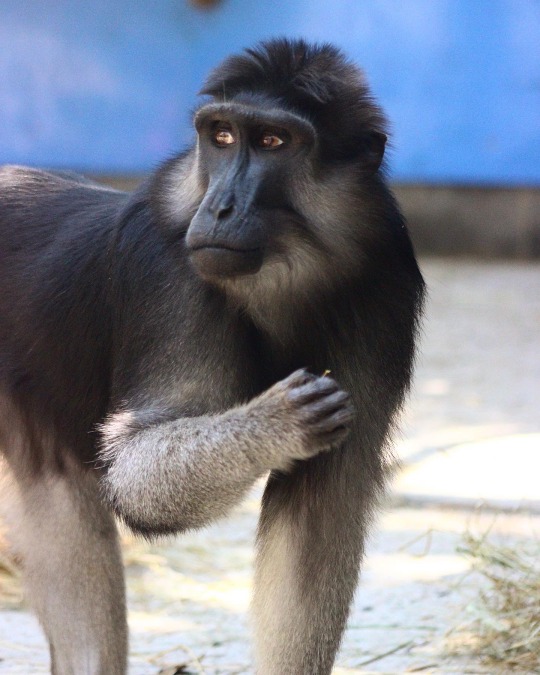
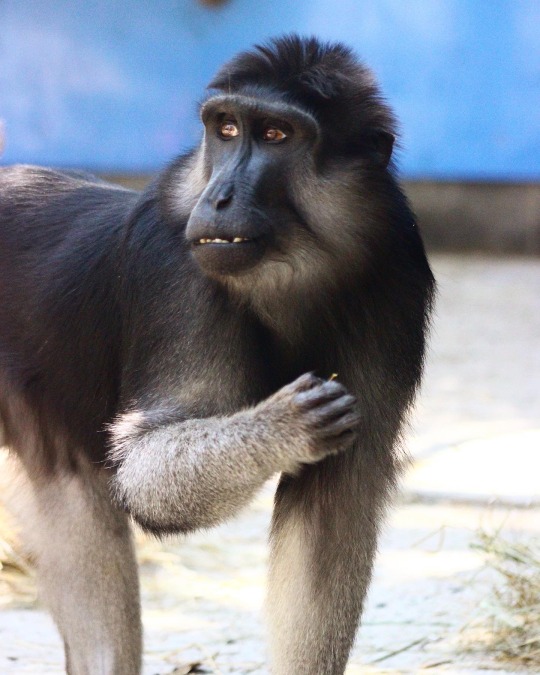
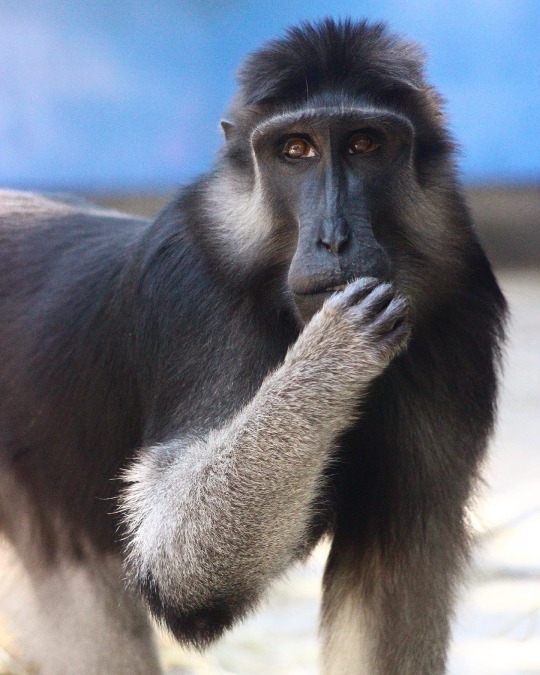

Booted Macaque (Macaca ochreata) - (c) SaritaWolf - please do not repost
10 notes
·
View notes
Text

A young chimpanzee eats in the Douala-Edea nature reserve, western Cameroon - Photograph: Daniel Beloumou Olomo/AFP/Getty Images
Click source for more Week in Wildlife photos (03/01/25)
#cameroon#chimpanzee#s-ord: haplorhini#i-ord: simiiformes#fam: hominidae#s-fam: homininae#tri: hominini#pan troglodytes#wildlife photography#daniel beloumou
5 notes
·
View notes
Text
Let's have some #positivity for honest, accurate bands:
Soft Cell: Being animals (specifically, humans), all the members have cells with flexible membranes rather than walls.
The Chordettes: They're chordates.
Rating band names based on their accuracy:
(I keep updating this list so check back later)
The Beatles: 0/10. None of these people are beetles, they’re just a bunch of fruity guys from Liverpool with matching haircuts
Pink Floyd: 4/10. There is not a single person named Floyd in the band, but some of the members do arguably look kinda pink
Nirvana: 10/10. Getting high and listening to Nirvana is roughly what I imagine actual nirvana to be like
Foo Fighters: either 0/10 or 10/10. I have never seen foo in real life so either they’re pretending to fight a problem that doesn’t exist or they’re doing an absolutely fantastic job of fighting it
The Eagles: 0/10. Same as the Beatles, there is not a single eagle in this band. The name is misleading and we have all been lied to
Queen: 6/10. Partial points for Freddie Mercury
Led Zeppelin: 0/10. I don’t think any of these guys have ever even seen a zeppelin, let alone one made of lead. A lead balloon would crash faster than my hopes and dreams
The Rolling Stones: 3/10. There is not a single stone in this band. Some points added because I’m pretty sure they rolled quite a few
U2: 0/10. Despite what the name says, I am not a member of this band
Metallica: 9/10. Naming a metal band “Metallica” is like naming your dog “doggy”
Red Hot Chili Peppers: 2/10. These guys are not chili peppers. They’re not even that hot, let alone red hot
Guns N’ Roses: 0/10. How the fuck could a gun or a flower play music
Backstreet Boys: ?/10. Depends entirely on their current given location
Simon and Garfunkel: 10/10. No notes
The Doors: 1/10. Jim Morrison is kinda shaped like a door tho
Chicago: 4/10. The number of people in this band does not come even remotely close to the population of Chicago. Points added because it originated in Chicago
Earth, wind, and fire: 2/10. This is even more innacurate than Chicago. Points added because wind instruments were often used
Def Leppard: 3/10. There is not a single leopard in this band. Some of the members are probably kinda deaf by now tho
The Beach Boys: ?/10. Accuracy depends entirely on location
The Black Eyed Peas: 6/10. Not sure what the hell an ‘eyed pea’ is but the black part is pretty accurate
Imagine Dragons: ?/10. Depends entirely on whether or not they’re thinking about dragons.
Cage the Elephant: 1/10. Why would you do that. Let the elephant go
Green Day: 0/10. They’re not even green
The Police: 0/10. There is not a single cop in this band
KISS: 5/10. I’m sure they probably kissed sometimes
The Monkees: 0/10. Are you fucking kidding me
We Butter the Bread with Butter: 8/10. I can’t verify this but I have no reason to suspect that they’d lie. Butter seems like the most logical thing to butter bread with
King Gizzard and the Lizard Wizard: 0/10. I got really excited about the concept of a lizard wizard only to be let down. My disappointment is immeasurable
They Might Be Giants: 5/10. I googled everyone in this band’s height, the tallest guy’s only 6’1 so I wouldn’t exactly consider him a giant. Then again, I can’t really argue because the claim was only that they MIGHT be giants
The Presidents of the United States of America: 2/10. None of these people are Joe Biden nor are any of them former presidents. This is incredibly misleading. I’m pretty sure “Lump” was written about my first girlfriend tho so I’ll give them a point or two
Gorillaz: 2/10 Not quite but we’re kinda close genetically so I’ll give them partial credit
The Killers: ?/10. I have no way of verifying if they’ve actually killed before but the fact that they’re not in prison tells me probably not
The Offspring: 10/10. These guys are definitely somebody’s offspring
Arctic Monkeys: 1/10. They are neither monkeys nor are they from the arctic
Thirty Seconds to Mars: 1/10. It takes WAY longer to get to mars than that
Beastie Boys: 8/10. They’re pretty beast on the guitar
Jimmy Eat World: 1/10. Slow the fuck down Jimmy, you’re biting off way more than you can chew
Hole: 9/10. One point deducted because I’m pretty sure they had more than one hole
Rage Against the Machine: 10/10. They did exactly that
Alice In Chains: 0/10. This is illegal. Let Alice go
The Band: 10/10. This could not possibly be more accurate
Nine Inch Nails: 1/10. I can’t find any good pictures of their feet but from what I can tell their fingernails definitely aren’t nine inches long
Bush: ?/10. Not quite sure about this one, felt uncomfortable asking
The Who: 2/10. I’m not dealing with this “Who’s On First” bullshit
Radiohead: 0/10. Not a single person in this band has a radio for a head
Queens of the Stone Age: 0/10. This band should be called “five random dudes from the modern era” but FRDFTMA is a bit of a mouthful
Soundgarden: 2/10. Sound does not grow in the garden
Sonic Youth: 5/10. They’re not exactly youth anymore but the sonic part checks out
Talking heads: 8/10. There’s more to the band than just a bunch of disembodied heads but the heads do tend to talk
The Cranberries: 0/10. Decent music but I only added them so that the Beatles and Freddie Mercury weren’t the only fruits on this list
The Wiggles: 8/10. They do tend to wiggle a lot
Blue Man Group: 10/10. Yep!
54K notes
·
View notes
Text
like anyone who says they hate animals is fundamentally an idiot of some kind and the average person wouldn't want anything to do with them and it's a pretty normal thing to use this as a basis for a litmus test of "is this person worth even being around" but i also just can't comprehend hating animals and nature as a whole like beyond the obvious that it's insane you stupid cunt you are a fucking ape. you are an animal. the anthropomorphism has gone way too far everyone's forgotten they're not special YOU ARE A STUPID FUCKING APE. animalia chordata mammalia PRIMATE simiiforme HOMINID. HOMO SAPIENS. literally get this through your stupid mammal skull.
Anyway
#🐉#i'm not that mad it does just annoy me but like i don't get it 😭#it seems very normal to have basic respect towards nature when you are a part of nature
10 notes
·
View notes
Text
The European woodlands are a series of mostly bamboo forests in Central, Western, Southern and Northeastern Europe.

These bamboo species have developed fleshier fruits and more robust branches, in order to support macaque descendants and the bigger parrots that inhabit their canopies and disperse their seeds.
The bigger herbivores of these forests are the Elepharrhinids, usually smaller and furrier than their grassland counterparts, and the biggest of the running hares, that browse on the lower canopy and battle for mates with their four facial horns.
Other than macaques and parrots, some of the canopy’s most common herbivores are the Sciuromiridae, red squirrel descendants that reached the size of modern New World Monkeys. They aren’t as social, don’t have the same good eyesight, and are still more relying on hearing and smelling, still more similar to lemurs and early primates than to simiiforms.
They’re preyed upon by arboreal mustelids descended from martens, smaller cats, eagle sized kestrel descendants and scavenging kites.
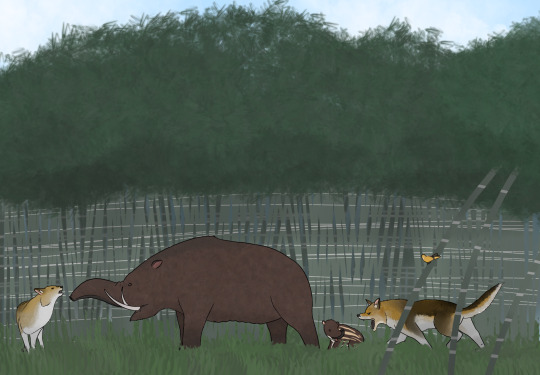
The apex predator of these forests is the Fellimus cambiulus, a close relative to the grasslands’ Fellimus alexandrae, its bigger relative. It hunts the biggest forest herbivores, macaque and squirrel descendants, smaller carnivores and birds. It’s range extends to most of Europe, except for islands, the Fennoscandian peninsula, northern Russia and the tallest mountains, and into Asia, up to the eastern coast of the Caspian sea. Canids became pretty abundant predators too, with pack hunting golden jackals descendants being pretty widespread across the continent, and being capable of taking down prey much larger than themselves.

Many forests rise along the courses of rivers, which are too home to rich and diverse ecosystems. Many of the freshwater fish species diversified into various forms, like big predatory trouts and catfish, and paddlefish sturgeons. Semiaquatic vertebrates diversified too, with the invasive nutrias becoming bigger, and reaching the size of really large boars, and in some species becoming bigger than hippos.
Vermins became as big as otters, and aquatic birds diversified too, with Cetti’s warbler descendants establishing a family of stork like waders, the Ciconicettidae.
With the warmer climate crocodiles expanded into Europe, although they’re still limited by latitudes, and stop around Southern France, the Carpathians and the Alps.
#spec evo#spec bio#speculative evolution#speculative biology#artwork#digital art#worldbuilding#epigene period#future earth#future evolution
42 notes
·
View notes
Note
She doesn't even bother with a mask or diminution with this introduction. She walks over first, ice cracking under her boots, and behind her hulks a heavy, enormous monster with blistered, curling corns exploding from its head. It actually looks like a proper demon, the mass of muscle it was hauling around truly something from a nightmare. Its skin was brick red and flooded with scales and it hunched so much with its own weight that the shell on its back was curved too. The snout's animalistic and between simiiforme and crocodilian.
"Helebor. It just showed up."
Not exactly subtle. The thing was loaded with battle scarring.
"Helebor?"
The myriad of combinations C-virus was able to create never ceased to be surprising. From dervishes of crab legs, to charming moths, and now something that looked straight out of an old computer RPG.

"It's cute."
2 notes
·
View notes
Text
"how do furries coexist with animals though" is still a funny question to me... like people go "but wait pluto is a dog and goofy is a dog what's going on" and act like it's a fucked up social question. ok member of species categorized eukaryota animalia chordata mammalia primates haplorhini simiiformes hominidae homininae homo sapiens, what's your opinion on eukaryota animalia chordata mammalia primates haplorhini simiiformes hylobatidae symphalangus syndactylus, the siamang gibbon. humanity's last common ancestor with the mouse lived a mere 80 million years ago... chimpanzees we diverged from a mere 7 million years ago!

we share over 95% of our genes with the chimpanzee! regarding protein-coding genes, we share over 85% with the rat... do not forget your connection to this earth!
3 notes
·
View notes
Text
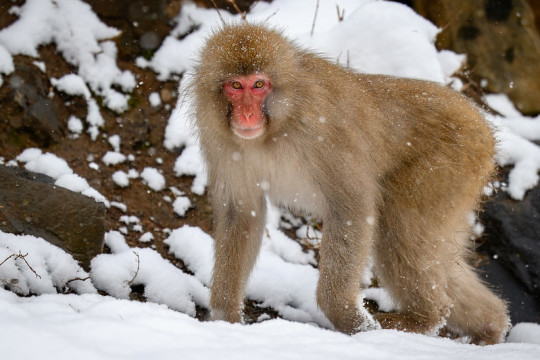
A Japanese macaque (Macaca fuscata) in Japan
by ted smith
#japanese macaque#macaques#monkeys#macaca fuscata#macaca#Cercopithecidae#Simiiformes#haplorhini#primates#mammalia#chordata#wildlife: japan#wildlife: asia
193 notes
·
View notes
Note
Golden snub-nosed monkeys?:) Weirdly ethereal vibes I would say
They're very unique looking!


#endangered species#central china#golden snub nosed monkey#endangered animal#endangered animals#mammalia#mammal#mammals#primates#haplorhini#simiiformes#old world monkey#monkey#monkeys#cercopithecidae#animal polls#poll blog#my polls#animals#polls#tumblr polls
38 notes
·
View notes
Text

East Javan Langur
#east javan langur#langur#Trachypithecus auratus#Primates#Haplorhini#Simiiformes#Cercopithecidae#Trachypithecus#upl
142 notes
·
View notes
Text

Common Sea Monkey/Mermaid
Kingdom: Animalia
Phylum: Chordata
Class: Mammalia
Order: Primates
Suborder: Haplorhini
Infraorder: Simiiformes
Clade: Hydropithecoidea
Family: Hydropithecidae
Genus: Hydropithecus
Speices: H. ichthyophilus (“fish-loving water ape")
Ancestral species: possibly Eosimias sinensis
Temporal range: Pliocene to recent (3.0 mya - present)
Information:
Though seal-like in appearance, H. ichthyophilus, better known by the natives as *sunsaapali* and to the English-speaking world as the mermaid or common sea monkey, is, as its name suggests, not a pinniped, but rather, an aquatic primate. A member of a broader clade known as the hypdropithecoids or sea monkeys, the ancestors of this clade were likely basal simians (though its exact placement in the primate family tree cannot be determined by morphology alone since it shows a mosaic of features found in both the New World and Old World clades of monkeys, as well as features which point to a stem-simian origin) which made the transition from land to sea sometime in the late Miocene (though the common sea monkey itself is a relatively young species, with the oldest fossil material dated to around 3 million years ago in the late Pliocene). Around 10 feet in length and around 800 lbs in weight, this creature is among the larger members of its clade. Sexual dimorphism is minimal, with males being only slightly larger than females and sporting larger canines. It is also the most widely-distributed member of its clade, being found in open ocean habitats all across Archaeonesia with a total wild population of around 90,000 mature individuals, whereas most of its relatives are confined to the deep coastal waters east of the Isle of Perils. Primarily a pelagic predator, this creature’s diet is incredibly varied, going after small marine reptiles (including venomous sea snakes), a wide assortment of open ocean fish, cephalopods (including ammonites), flying sea birds, pterosaurs, and even flightless birds like penguins and some varieties of auks. This species is known to dive to the twilight zone, as far as 2,000 feet deep, in the search for food, where it hunts large deep-sea arthropods. Most of the water it needs to survive is obtained through its food. Coloration in this species is highly varied. The most common color variant is the “skipjack” one, named after its similarity to the color patterns of the skipjack tuna with its blue and white countershading. However, other color morphs exist, including a melanistic, leucistic, dark brown, light/sandy brown, “humpback” (gray and white like the whale it’s named after), mottled grey and white, and a piebald one.
A highly social and intelligent aquatic primate, the common sea monkey has a highly complex matriarchal social structure, living in family groups of up to 30 individuals. Pack-hunting is a common phenomenon and typically occurs when hunting larger prey, the younger and more limber juveniles corralling prey towards the larger and more powerful adults. Orphaned young are often cared for by other female members of the group, and young are frequently passed around from adult to adult when the respective parents of the young sea monkeys are off foraging. Though a formidable predator in its own right, it is still subject to predation from other ocean-going predators, namely whales, sharks, and large marine reptiles. To counter this, the common sea monkey uses a variety of “songs” to indicate both the identity of the predator as well as how close it is to the group. A highly vocal animal, this species communicates with a wide variety of sounds other than just “singing”. Clicking is a common vocalization, seemingly a form of echolocation as is seen in dolphins. Barking and gurgling are both used to convey aggression. This creature’s eyesight is superb, allowing it to see in pitch black seas. Like dolphins, it sleeps with one eye open and can hold its breath for hours at a time. A swift swimmer, it relies on its speed and maneuverability to escape predators, though it will attack if seemingly cornered, biting its attacker viciously. Another common way to evade predators is to spontaneously void its bowels, clouding the way with a noxious cloud of feces which both disorients its attacker and overwhelms its sense of smell. Breaching is a frequent behavior and appears to be done to swiftly grab seabirds or pterosaurs out of the air. Curious animals, they will readily approach divers and may also jump onto boats to escape predators. Some may even offer divers fish or crustaceans seemingly as a peace offering, a common gesture between sea monkey family groups.
This species mates year-round, although it occurs most frequently during November and December. The large tusks of the male are a secondary sex characteristic and are typically merely for show rather than function. The larger the tusks, the more attractive he is to females. Unusually for mammals, this species exhibits polyandry, with females having multiple mates. Gestation takes around 6 months, and the babies are born without claws or teeth to avoid injuring the mother during birth, being born feet first as well to prevent the risk of drowning during birth. Full size is reached by 2.5-3 years old and sexual maturity by 4. Young males are kicked out of the group by this period, which leads them to seek out other family groups to join, while the females typically stay with their original family group. In the wild, they can live as long as 26-30 years and in captivity, they can easily live to 34-40 years.
Though it primarily dwells in open oceans, these creatures are known to occasionally enter coastal waters and come ashore, particularly during tropical storms, which has led to a belief in many regions that these animals bring storms. Despite this association, these animals are seen rather positively by the natives. In other regions, these creatures are believed to be the reincarnated souls of sailors who died at sea. On the eastern coast, their tendency to swim alongside the outrigger canoes of the Banguani people, a culturally Polynesian minority in the region, up and down the coastline in search of food has led to a more humorous name amongst some as “Banguani sea dogs”, the idea based on the belief that the Banguani had a special association with these animals. Indeed, there is some truth to this. The Banguani people consider the common sea monkey to be the spirits of their ancestors and sometimes pay tribute to the animals by offering them some of their catches. In some areas, this species was also a historic food source, being heavily hunted in antiquity, with cave paintings all throughout the region directly depicting this. In the modern day, few people eat these animals, namely due to the fact that since they’re now known to be distantly related to humans, there is a fear of pathogens spreading from common sea monkeys to our own species, but many still hunt them for their teeth and tusks or to take their young, which are highly sought-after by aquariums and wildlife institutions abroad for their unique biology. Nicknamed the “mermaid” for its passing resemblance to the mythical creature, fringe theories suggest that a population of these creatures which escaped Archaeonesia when the border mountains crumbled back into the sea might be responsible for myths of mermaids and selkies. Interestingly, along the southern seas of the Isle of Perils, this creature is very rare, possibly due to the presence of seals and sea lions, which suggests that there may be an element of competitive exclusion between the two groups. It is sympatric with most other species in its clade, though there appears to be little interspecies competition between them, suggesting some level of niche partitioning. Remains of common sea monkeys have occasionally been found in the stomachs of giant deep-sea cephalopods, suggesting that some deep-sea creatures may prey on them. When dying, these animals are known to isolate themselves, seemingly swimming to shallow waters or nearby shorelines to die, a behavior suggested to have an evolutionary basis: by isolating themselves, the smell of their dead body will not attract predators to the larger group and therefore risk additional casualties.
#original species#novella#speculative evolution#fantasy#scifi#scififantasy#speculative biology#speculative fiction#speculative zoology#worldbuilding#creature art#sci fi#fantasy worldbuilding#fantasy creature#scifi worldbuilding#scifi creature#aquatic ape theory#sea monkey#mermaid
9 notes
·
View notes
Note
hi I’m here to ask about orangutans cause I’m interested
THANK YOU SO MUCH FOR ASKING, sorry it took a bit i was busy but thank you!!
-------------------------------------------------------
So orangutans are primates, primates includes apes(both lesser and greater), monkeys(old world and new world), tarsiers, lorises, and lemurs.
Mostly characterized by larger brain to body ratios, and locomoting using tree to tree hopping, brachiation(branch to branch swinging), bipedalism on their hind legs or quadrapedalism.
Going further through the phylogenetic tree through the sub-orders Haplorhini to the infra-order Simmiiformes we reach the split of old world monkeys(Parv-order: Catarrhini) and new world monkeys(Parv-order: Platyrrhini).
Yet only one is true in its common name, due to apes being lumped into old world monkeys.
Now going to the Superfamily homonoidia we reach apes and only apes.
Apes can be more commonly identified via tailessness.
Homonoidia contains two families Hylobatidae(Lesser Apes) and Hominidae(Great Apes), the main difference between the two is Hylobates not making nests, exhibiting low sexual dimorphism and being smaller on average.
Hylobatidae includes four genera(Hoolock, Hylobates, Nomascus, Symphalangus), but in short lesser apes or the family Hylobatidae only includes gibbons.
Hominidae are great apes(listing closest to farthest genetically from humans) We have humans with only one extant species(Homo Sapians), then chimps and bonobos(Pan Troglodyte and Pan Paniscus respectively), then Gorrilas with 2 extant species(Gorilla Gorilla or Gorilla Beringei), and last but not least with 3 species Orangutans(Pongo Pygmaeus, Pongo abelii, and Pongo Tapanuliensis).
In total orangutans belong to the Domain Eukaryota, Kingdom Animalia, Phylum Chordata, Class Mammalia, Order Primates, Suborder Haplorhini(old world monkeys), Infraorder Simiiformes, Family Hominidae and subfamily Ponginae with 3 species.
The 3 species being Bornean(P. pygmaeus), Sumatran(P. abelii), and the most recently discovered Tapunuli(P. tapunuliensis), with only three subspecies belonging to the Bornean orangutans(Pygmaeus, Morio and wurmbii)
The adult males grow cheek pads(flanges) that can act as dishes to further their calls due to being more solitary in nature, and depending on the species can also be different in shape. Still reasearchers are completely unsure on why some adult males grow them and why some dont.
Even though their general omnivorous nature theyre more frugivourus which could be one of the factors for their more solitary nature. Due to their omnivory they also eat bark, insects, bird eggs, honey, and smaller primates such as bush babies.
Like gorillas, each night orangutans make makeshift nests out of leaves for them and, in the case of mothers, their childrens. Social bonds are almost primarily females and their offspring which will often, even in adulthood, will come back and visit.
Adult females usually stand about 3'9 and weigh about 37 kg(82lbs), while adult males reach up to 4'6 and weigh 75kg(165 lbs). Orangutans having longer arms and shorter arms for arboreal life and easier brachiating(the action of swinging from branch to branch), with the average arm span of 6.6ft. The heaviest orangutan to live is a male bornean orangutan, "Andy", who weighed up to 204kg(450lbs) at 13 years old.
With smaller thumbs, longer fingers, and resting configuration of a suspendery hooks, orangutans have an easier time hanging with the advantage double locked grip by resting the tips of the fingers against their palms, same for their feet. Hip joints similar to their shoulders allow for similar ranges of motion. Unlike their great ape cousins though, orangutans arent true knuckle walkers, prefering to walk on their fist and the sides of their feet.
3 notes
·
View notes